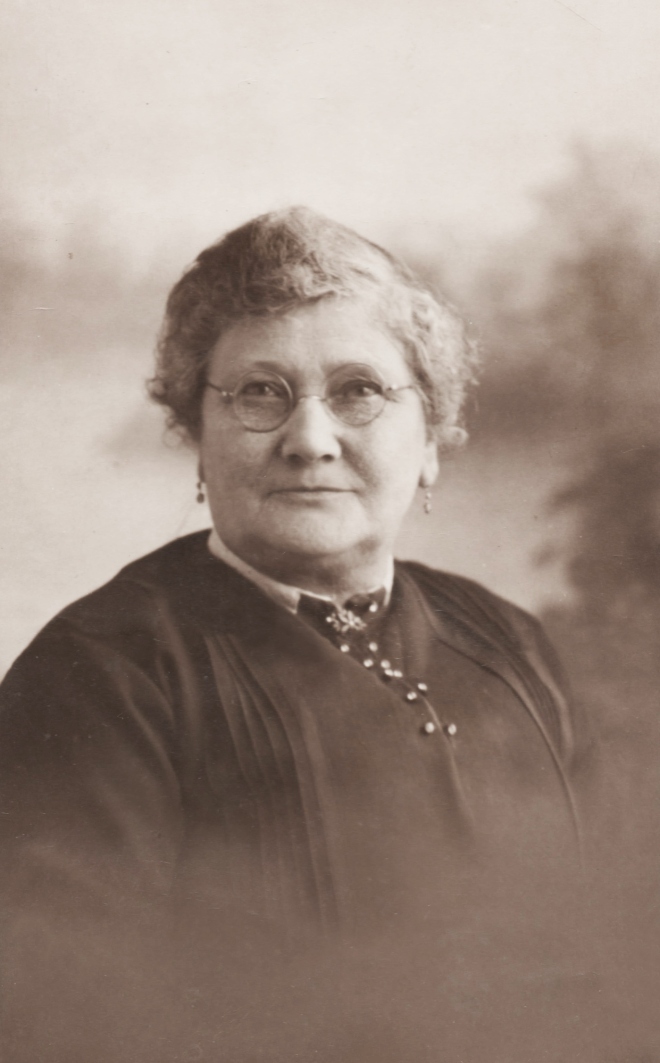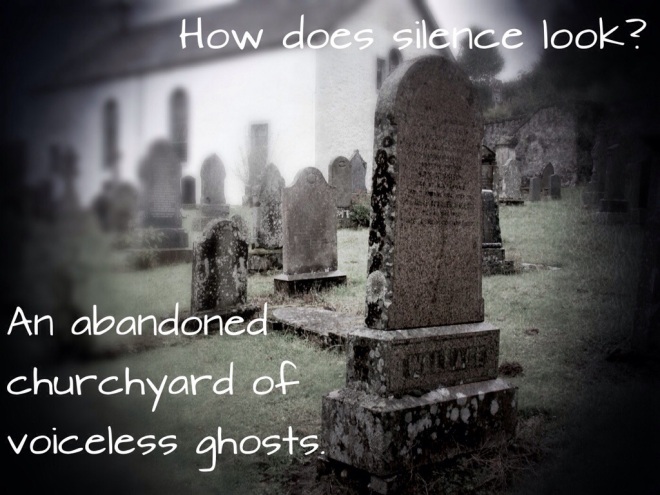
Four generations: My christening, with my mother Elizabeth Ramsay, her mother Margaret Cruden and Margaret’s mother Catherine Black. Image: Leslie family archive.
Luanne at The Family Kalamazoo recently wrote two really interesting posts about the deaths of her grandmothers and great grandmothers (1).
In the first, she said:
I wanted to put all my grandmothers together in one post and thought by sharing their deaths it would shed some light on their lives, at least at the end. I also have a ghoulish fascination with looking them over for the variety of ways I might die myself. After all, their deaths could be a form of inheritance.
It got me thinking about the women in my family and that part of my own genetic inheritance, so I’ve done the same. And the results have surprised me – not least because I was able to find death records for most of my grandmothers and great grandmothers, but also for all eight of my 2x great grandmothers and 13 of my 16 3x great grandmothers.
Grandmothers
I only knew one of my grandmothers – my mother’s mum, Margaret Simpson Bisset Cruden.
Gran died in on May 1, 2006, 10 days short of her 98th birthday. I can’t lay my hands on her death certificate (embarrassed admission), but my mother thinks it was basically written up as “old age.” I’ve described my gran as a Force of Nature – and I suspect that in the end, she just got tired of an increasingly constrained life after a significant deterioration in her eyesight forced her into residential care.

One of the last photos I have of my gran; meeting her 25th great grandchild (my son) for the first and only time. Image: Leslie family archive.
By contrast, my paternal grandmother, Susan Forbes Nicholson Elder, died on 11 March, 1950 at the age of 50. The cause of death given in the statutory register was arteriosclerosis and cerebral haemorrhage. I never met the woman I was named after; my dad was only seventeen when his mother died and I know how painful her loss was to him.
Great grandmothers
Catherine Simpson Bisset Black — my maternal grandmother’s mother – died in 1971. Like her daughter (Margaret Cruden above), she lived a long life; being 82 when she passed away a year after her husband of 62 years, Alexander Cruden. I don’t have her death certificate either so am not sure about cause of death.

Sixtieth wedding anniversary: Alexander Cruden and Catherine Black, 1968. Photo: Ramsay family archive.
My mother’s other gran, Mary Fisher, died in September 1952 of a carcinoma of the gall bladder. She was 73.

David Skinner Ramsay and Mary Fisher; their fiftieth wedding anniversary. Image: Leslie family archive.
On my father’s side of the family, his maternal grandmother — Anne Kinnell Nicholson — died in May 1946, aged 76. Her cause of death was recorded as cardio-vascular degeneration.
Dad’s paternal grandmother Isabella Gourlay was 91 when she died in February 1961. The cause of death was recorded as congestive cardiac failure.
2x great grandmothers – maternal
Margaret Simpson Bisset (19 April 1856- 2 April 1900), died of uterine haemorrhage probably as a result of childbirth, aged 43.
Isabella Simpson Wallace (3 May 1866 – 9 June 1944), died of abdominal carcinoma, aged 78
Jane Williamson Westwood (10 February 1858 – 27 September 1905), died of carcinoma pylorus aged 47
Isabella Westwater ( – 7 December 1924), died of chronic bronchitis. The death certificate states she was 71, but I have not been able to find a birth record for her.
2x great grandmothers – paternal
Susan Forbes (23 August 1839 – 19 April 1912), died of cerebral thrombosis, aged 72.
Elizabeth Penman (12 August 1839 – 8 August 1920), aged 80. Cause of death: diabetes.
Mary Gerard (c. 1835- 7 May 1907). Her age at death was recorded as 72 and the cause of death as enteritis and haemorrhage.
Janet Trail (c. 1835 – 4 March 1913). Her age at death was recorded as 78, and cause of death bronchitis.
3x great grandmothers – maternal
Helen Lang Simpson (14 February 1832 – 25 September 1914), Died aged 82, of arteriosclerosis and senile decay.
Caroline Goodall (c. 1833 – 16 May 1901). Her age at death was recorded as 68, and the cause of death carcinoma uterine.
Jane Morrison (c.1839 – 1914). Her age at death was recorded as 75. I am a bit unsure of the cause because I can’t clearly read the handwriting on the record. It looks like “chronic infestation of parasites.”
Jane Allison (c. 1835 – 2 September 1876). Her age at death was recorded as 41, and cause of death typhoid fever.
Mary Webster (c. 1824 – 16 March 1907). Her age at death was recorded as 83. Cause of death: cardiac arrest, senility.
Margaret Lindsay (27 May 1827 – 1 January 1906). She died aged 78 of ovarian tumours.
Helen Low (5 December 1814 – 7 May 1887). Died aged 72 in the Dysart Combination Poorhouse. Cause of death: paralysis, senile debility.
Maggie? (or Isabella?) Westwater. I know nothing about this woman beyond what is recorded on her daughter Isabella’s marriage and death records. When Isabella married John Ramsay in 1875, her mother was named as Isabella Westwater, deceased. On Isabella’s 1924 death certificate, her mother is named as Maggie Westwater, deceased.
3x great grandmothers – paternal
Ann Kinnell (15 July 1806 – 28 February 1858), died aged 51. The cause of death was recorded as carcinoma, enlarged liver
Mary Tod (7 June 1803 – 1 February 1883), died aged 79. Her cause of death was recorded as old age.
Catharine Cook (c. 1813 – 16 May 1879). Her age at death was recorded as 66, and the cause of death old age.
Janet Mackie (c. 1811 – 25 December 1897). Her age at death was recorded as 86, and the cause of death senile decay
Isabella Lambert (25 March 1804 – 25 December 1851), aged 47. The only record I have relating to her death is an (OPR) Old Parish Register entry relating to her burial. It does not show cause of death.
Elizabeth Rankine (c. 1805 – 10 December 1850). The OPR record of her burial shows her age as 45, but gives no cause of death.
Christian Birrell. I believe that Janet Trail’s mother was born around 1787, but I can find no record of her baptism, marriage or death. The last census in which she appears is 1851.
Elizabeth Robertson gave birth to George Leslie, my 2x great grandfather, in 1822. Besides his baptism records and an entry in the 1841 census, I have been unable to find any records relating to Elizabeth’s life and death.
Some reflections and conclusions
Doing this exercise made me incredibly grateful for excellent Scottish record-keeping – in particular statutory records, which began in 1856. Because of this, I only had to rely on parish records for information on the deaths of two of the 3x great grandmothers about whom I know.
Three others remain completely elusive; being little more than names on their children’s birth, death or marriage records. I’ve done quite a lot of work on Elizabeth Robertson and Christian Birrell particularly, but they remain brick walls.
When I looked at the age-at-death data, one thing that really struck me was how many of my female ancestors lived very long lives. Two made it into their 90s – one from each side of my family – while five of the 27 I have information about lived into their 80s.
Perhaps more surprisingly, four of those five were born in the first half of the 19th century (1812, 1824, 1832 and 1839), a period during which average life expectancy for Scottish women was less than 50 years.
Of my grannies who died at or below 50 (six in total), two were born in the first decade of the 19th century, two in the 1830s, one in the 1850s, and one — my paternal grandmother — in 1899. So although I think of them as having died young, in most cases, it would not have seemed so at the time.
Within my family the average age at death across the four generations I looked at was 72.5 years, and the median age 73.
Causes of death ranged from typhoid fever to “old age” – with the largest number of deaths being attributed to advanced age. The second most frequent cause of death was cancer, followed by heart disease; both major killers these days too.
| Cause of death | Frequency (2) | Years deaths occurred
|
| Arteriosclerosis | 2 | 1914, 1950 |
| Bronchitis | 2 | 1913, 1924 |
| Cancers | 6 | 1858, 1901, 1905, 1914, 1944, 1952 |
| Cardiac decay/disease | 3 | 1907, 1946, 1961 |
| Diabetes | 2 | 1920, 1971 |
| Haemorrhage (not cerebral) | 2 | 1900, 1907 |
| Old age/senile debility | 8 | 1832, 1879, 1883, 1887, 1897, 1907, 1913, 2006 |
| Parasites | 1 | 1914 |
| Stroke | 2 | 1912, 1950 |
| Typhoid | 1 | 1876 |
| Unknown | 2 | 1850, 1851 |
With few exceptions, these women were born into poor, working class, landless families. Where statutory marriage records exist for them, I can see that prior to their marriages they were in employment – as flax weavers, pottery workers, domestic servants.
They all bore children, usually large numbers of them, and often well into their forties. More than a few also raised the grandchildren born to widowed or unmarried daughters
They ran households dependent on the weekly wages (or not) of husbands working as miners, carters, agricultural labourers, factory workers, and tradesmen – and of adolescent and adult offspring following their parents into the same sorts of jobs.
Most would have had to move house regularly; some from one tenement to another in the same town, others making the move from Scotland’s rural hinterland to the industrial towns of Dundee and Kirkcaldy.
An extraordinary number – twenty out of the twenty seven I have data for — died in Kirkcaldy/Dysart, an area of around 15 square miles. Three died in other Fife towns, one never left rural Blairgowrie in Perthshire and another died “across the Bridge” in Edinburgh infirmary. Only one died outside of Scotland – in Detroit.
In many ways, there is nothing extraordinary about my assorted grannies. They lived fairly typical (though long) lives for their time, leaving only faint traces of themselves in written records.
But however ordinary, they deserve to be acknowledged and remembered. This post is a very small contribution towards that goal.
- Deaths in the Family: Women’s History Edition, and More Deaths in the Family: Women’s History Edition
- Many of the women had two (or more) medical conditions listed in cause of death. This is reflected in the frequency column.






















